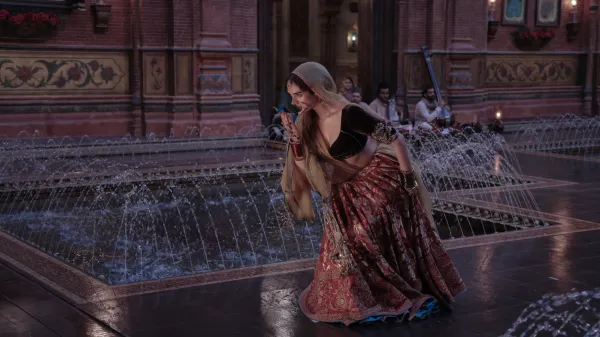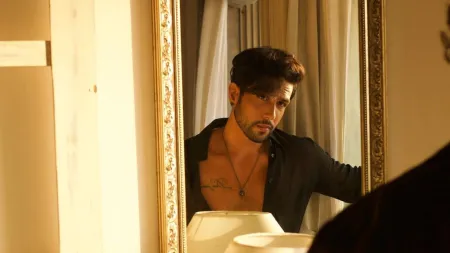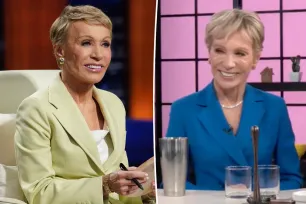Take a shot every time someone says the word ‘khauf’ in the new Netflix series Heeramandi: The Diamond Bazaar. Or take one whenever somebody barges into a room unannounced, or perhaps every time Sanjeeda Sheikh switches allegiances. Chances are, you wouldn’t last 15 minutes, which is a good thing, because it would spare you the horror of watching the humourless and ultimately hollow eight-episode show, orchestrated by Sanjay Leela Bhansali. Set in the world of courtesans and nawabs in pre-Independence India, Heeramandi offers plenty of palace intrigue, historical drama, and unchecked opulence, all filtered through Bhansali’s signature brand of elevated B-grade storytelling.
Spoiler alert

Pearls are clutched, bodies alternately defiled and venerated; in one memorable scene, there is a literal ‘pardafaash’. A curtain is pulled to reveal a character swivelling menacingly on a chair, wearing dark glasses and smoking a cigarette, instantly revealing herself to be a double agent of sorts. Heeramandi is filled with unintentionally funny moments like this; moments and scenes straight out of a pulp potboiler that you’d purchase on a railway platform, or a film from the 1980s that you would tut-tut at. But plonked in the year 2024, devoid of any self-awareness or genre thrills — this is exploitation cinema, but Bhansali doesn’t realise it — Heeramandi can’t help but feel archaic. And no single scene captures the show’s outdated sensibilities more accurately than that outrageous one in episode seven.
Also read – Gangubai Kathiawadi: Sanjay Leela Bhansali’s sexless ode to sex workers undermines their struggle and spirit
Mallikajaan, played by Manisha Koirala, is the big cheese of Lahore’s Heeramandi district; a self-attested personification of ‘saazish, fareb, chaalbaazi aur kameenapan’. When her beloved daughter Alamzeb (a practically catatonic Sharmin Segal) takes the fall for a crime she didn’t commit and is arrested by the Imperial police, Mallikajaan has a bit of a mental malfunction. In one moment, she appears to turn her back on Alamzeb, angry at her for having run away from home to pursue a romance that she, her mother, didn’t approve of. In the next, Mallikajaan shows up at the police station, begging for Alam to be freed. In Heeramandi, characters tend to turn on a dime.
 Sonakshi Sinha as Fareedan in Heeramandi: The Diamond Bazaar.
Sonakshi Sinha as Fareedan in Heeramandi: The Diamond Bazaar.
Mallikajaan hands over all the money that she — a relic of the past herself — has accumulated over the years. When the villainous cop offers her change in the shape of a dissatisfied shrug, Mallikajaan hands over her jewellery as well. But no luck. If she wants Alam to be freed, the sadistic cop tells her, she must perform a ‘mujra’ for him and his buddies. They wolf-whistle as she twirls uncomfortably; they slap her around for their amusement. Bhansali’s camera lingers on the humiliation. Incensed at the indignity — this scene escalates quickly, because moments earlier, the stakes appeared to have peaked at the idea of Mallikajaan having been made to wait for the appointment — she cuts to the chase.
“Do you want to rape me?” she offers, and without waiting for an answer, submits herself to the five men around her. “I will suffer for the sake of my child,” Mallikajaan declares, as you reel more from the shock of Bhansali’s choice to include this scene than from the horror it depicts. It’s a magnificently misguided stretch of storytelling, but one that represents perhaps the biggest misconception of modern Hindi cinema — that Bhansali writes ‘layered female characters’. But what the filmmaker has been doing for years, instead, is glamourising the suffering of women.
Abuse has never looked as pretty as it does when he (or one of his army of assistants and cinematographers) shoots it. Consider the controversial climax of Padmaavat, in which Deepika Padukone’s character walks into flames to preserve her honour — unlike Mallikajaan, she was avoiding the prospect of being violated by the villains. Every rational person correctly called the climax out as deeply ill-conceived. It was a grand, operatic pinnacle of everything that is wrong about Bhansali’s idea of feminism, which depends entirely on how willing women are to bear pain, and not, as he might have led himself to believe, on how well they mask it.
To understand how he views women, it is important not just to examine the gang rape scene in Heeramandi, but also the one that comes immediately after it. Mallikajaan is wearing black, and posing formidably under a fountain. Characters who were openly disdainful of her, or, in the case of Sonakshi Sinha’s Fareedan, actively plotting against her downfall, immediately become allies. Mallikajaan dismisses the idea of getting medical treatment. “Dard itna hai ke kambakht hakim dawa ki jagah maut likh dega,” she says, laughing mirthlessly. “Mallikajaan lohe ki bani hai, itni asaani se toot nahi sakti.” This is the emotional payoff that Bhansali was building towards. We are meant to admire Mallikajaan’s spirit, without questioning what she has been put through in order to bare it.
 Aditi Rao Hydari as Bibbo in Heeramandi: The Diamond Bazaar.
Aditi Rao Hydari as Bibbo in Heeramandi: The Diamond Bazaar.
Mallikajaan isn’t the only character who is tortured by Bhansali over the course of Heeramandi’s eight episodes. Bibbojaan (Aditi Rao Hydari) is killed by a firing squad after also being abused in captivity. Lajjo (Richa Chadha) dies sad and alone. Alamzeb, on the other hand, is sentenced to a loveless life after her boyfriend Tajdar (Taha Shah Badussha) is killed on their wedding day — this, by the way, is how the show’s only true love story ends. The sole narrative arc in which a woman actually prospers in the outside world unfolds entirely off-screen. Preoccupied by the pain of these women, Bhansali has no time to celebrate their achievements. This character, a woman named Saima who worked in the kitchens of Heeramandi, went and became a popular songstress. We don’t see a second of her success in the show. Her story became irrelevant to Bhansali the moment she flew out of her gilded cage. This is quite telling, isn’t it?
Read more – Amar Singh Chamkila: Imtiaz Ali set out to make a movie about the slain singer, but he made a movie about himself instead
The sole agenda behind putting Mallikajaan through this horrific abuse, it would seem, was to make her a more sympathetic figure. But if generating sympathy was the ultimate goal, was gang rape the only option? After Mallikajaan’s heroic act of sacrifice, as it were, Fareedan recognises the error of her ways, Waheeda settles down once and for all, and everybody decides that instead of fighting each other, they should perhaps train their focus on a common enemy — the British. In its final two episodes, Heeramandi transforms along with its characters, and turns into a sanitised retelling of the independence struggle — it’s a pivot so abrupt that if Sara Ali Khan from Ae Watan Mere Watan were to suddenly drop by with a ‘mashaal’ of her own, you probably wouldn’t bat an eye.
Bhansali’s famously vivid visuals are almost like the opium that the women of Heeramandi occasionally inhale to dull the pain. By presenting us with tableau after tableau of pristine beauty, elaborate costumes fit for queens, and symmetrical frames that serve as an ironic juxtaposition for the characters’ uneven lives, Bhansali is effectively drugging us into submission. The assumption is that we’d be so enamoured by the surface that we wouldn’t think to scratch beneath it. But these images cannot be divorced from the show’s themes; the technical achievements cannot be appreciated devoid of context. They’re meant to serve the story and the characters. But Heeramandi is all diamond, no rough.
Post Credits Scene is a column in which we dissect new releases every week, with particular focus on context, craft, and characters. Because there’s always something to fixate about once the dust has settled.
Post Credits Scene is a column in which we dissect new releases every week, with particular focus on context, craft, and characters. Because there’s always something to fixate about once the dust has settled.
Disclaimer: The copyright of this article belongs to the original author. Reposting this article is solely for the purpose of information dissemination and does not constitute any investment advice. If there is any infringement, please contact us immediately. We will make corrections or deletions as necessary. Thank you.







